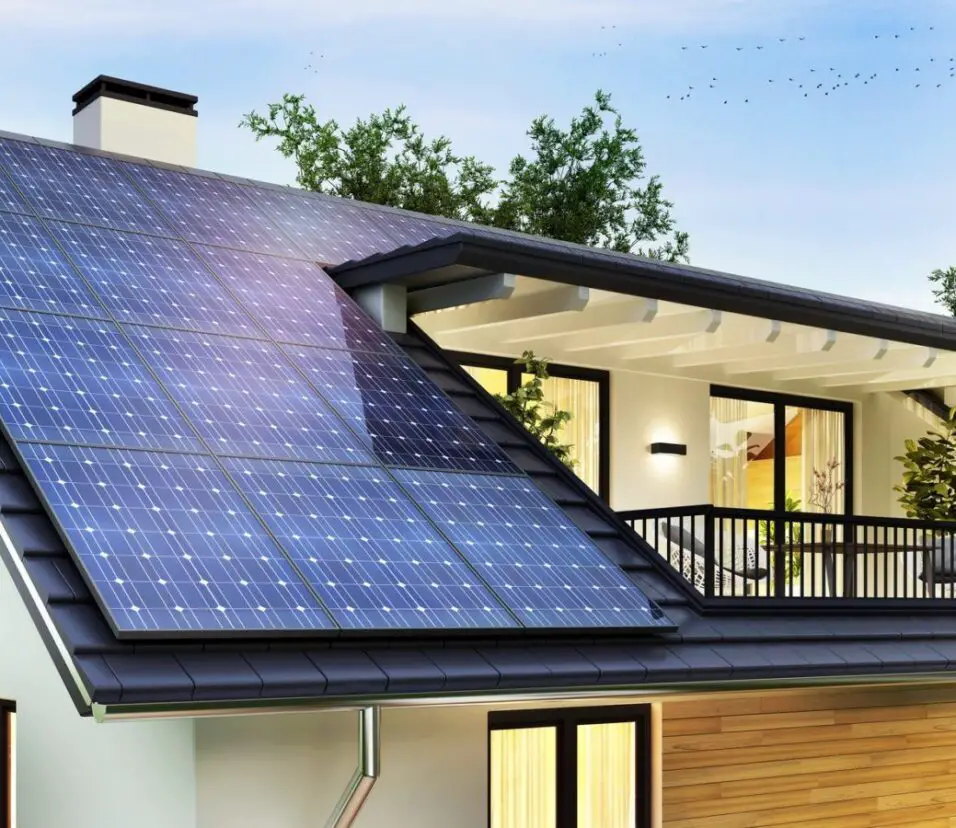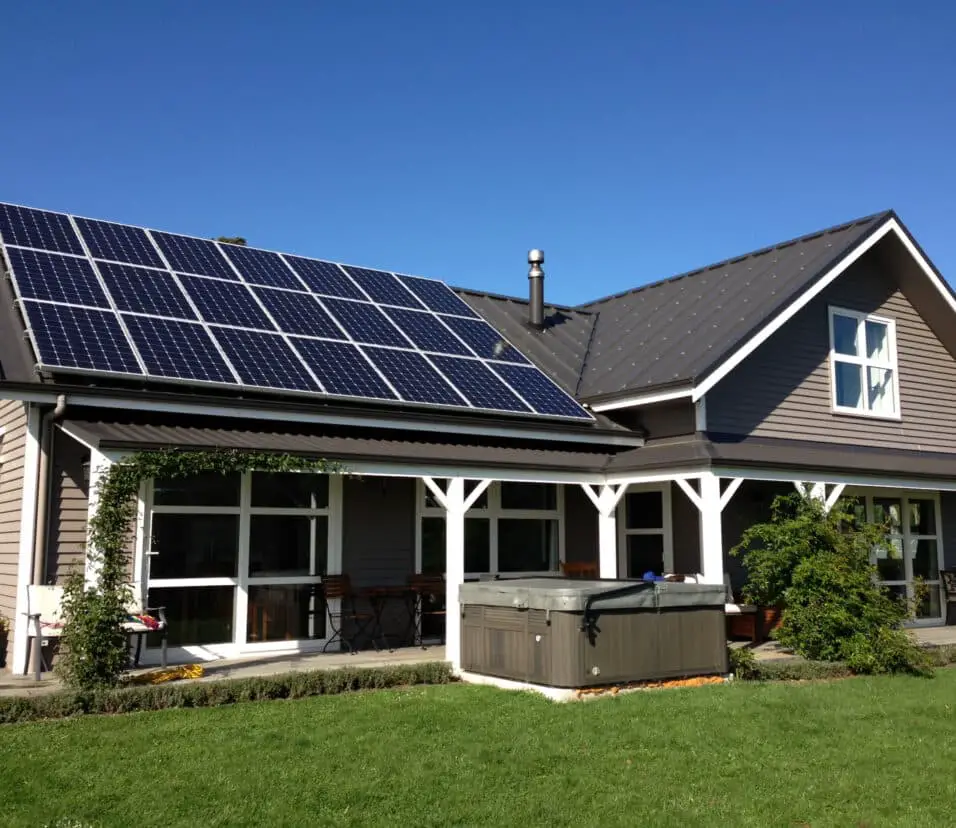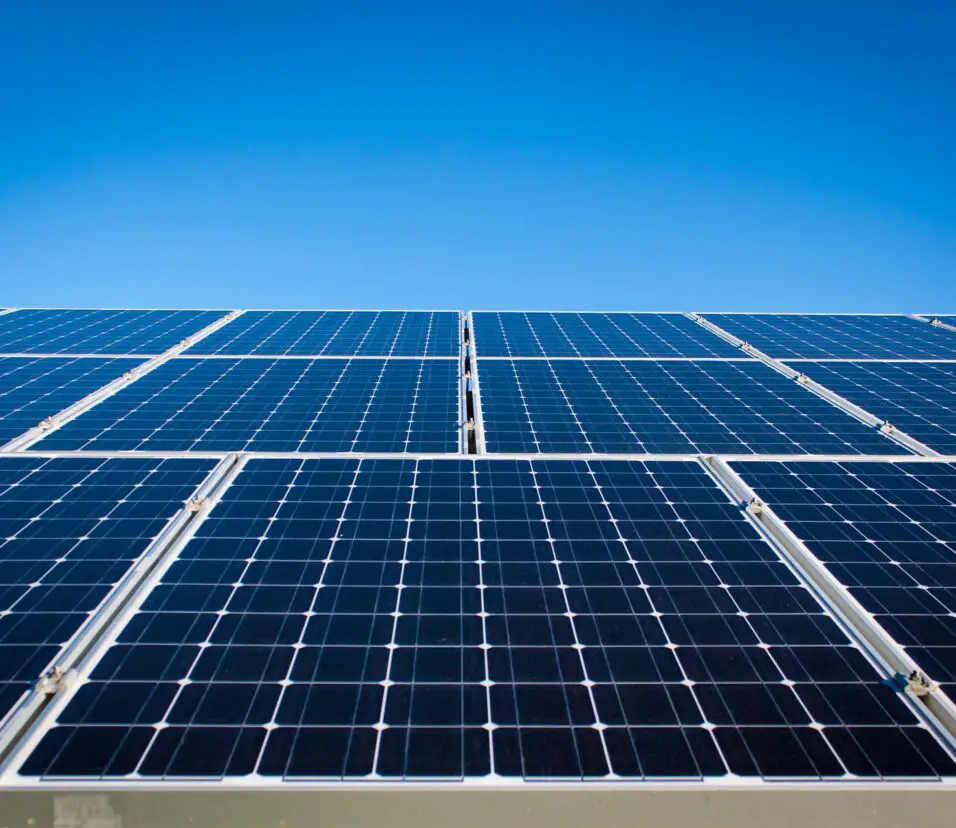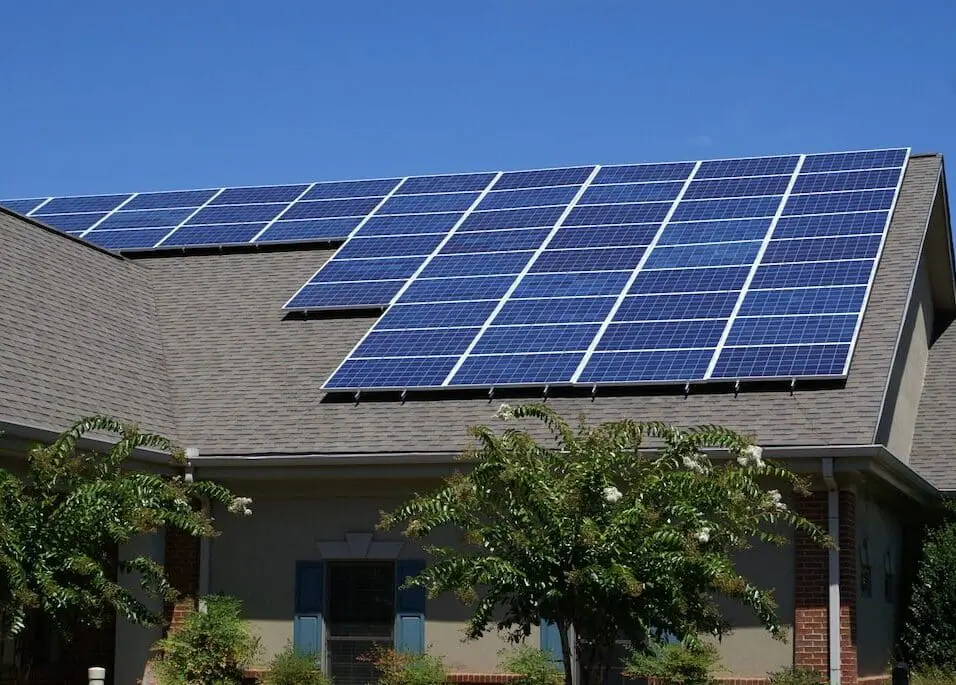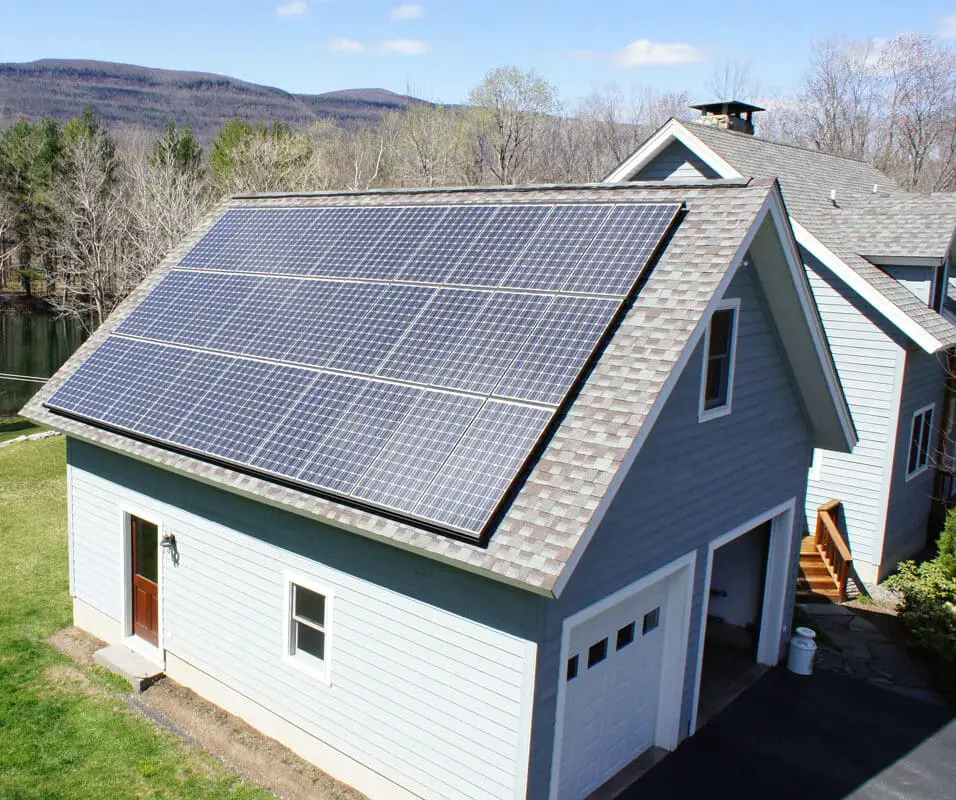Can Solar Panels Be Installed On A Manufactured Home
Introduction
Can Solar Panels Be Installed On A Manufactured Home: Manufactured homes, also known as mobile homes or trailers, have gained popularity as affordable housing options, making up a considerable portion of the housing market. However, due to their unique construction and mobility, many homeowners wonder if they can take advantage of solar energy like their traditional counterparts. we hope to contribute to the wider adoption of home value sustainable energy solutions and pave the way for a greener and more sustainable future.
Address common questions and concerns surrounding solar panel installations on manufactured homes. We will explore the structural considerations and load-bearing capacity of mobile homes to ensure that the installation process is safe and efficient. Additionally, we will examine the various solar panel mounting options available for manufactured homes, considering factors such as roof type, orientation, and available space.
Beyond the technical aspects, we will also delve into the financial implications of going solar on a manufactured home. Understanding the potential return on investment, available incentives, and long-term energy savings will be crucial for homeowners looking to make an informed decision. The information you need to determine if solar panels are a viable option for your dwelling. By empowering you with knowledge and insights.
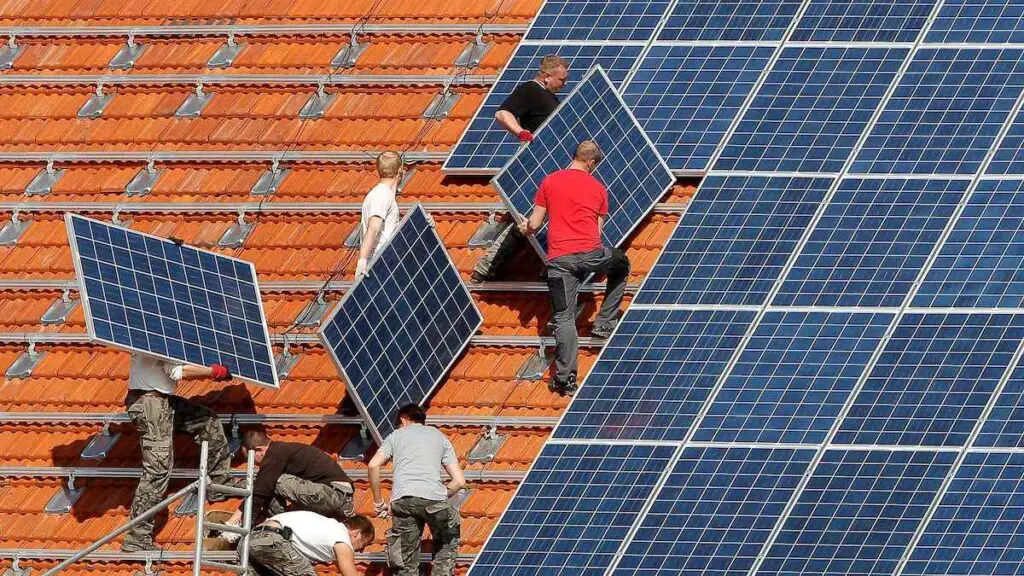
Can you power a factory with solar panels?
Factory rooftops are suitable for solar panels. Since companies are energy-intensive, placing a solar PV system on their roof generates free electricity for everything underneath.
Factories are known for their energy-intensive machinery, lighting, heating, and cooling. Solar panels can balance a large percentage of this energy demand with clean, renewable energy. Industrial facilities have considerable rooftop and ground space to generate electricity from solar energy and lessen their grid dependence.
Solar panels can power a factory depending on installation area, energy usage, and regulations.
Some industries have enough roof space for solar arrays, while others employ ground-mounted systems on nearby land. A complete energy audit and solar specialist consultation will assess the factory’s energy needs and system size and design.
Solar electricity can save manufacturers a lot of money. Solar panels protect factories from fluctuating energy prices and reduce grid dependence. Tax credits or renewable energy certificates may boost industries’ ROI, depending on the region and incentives.
By using solar energy, manufacturers can cut their carbon footprint and greenhouse gas emissions. This supports corporate social responsibility and shows the factory’s dedication to sustainability, which can boost its reputation among eco-conscious consumers.
Can solar panels run my whole house?
Can a house run on solar power alone? It is possible to run a house on solar power alone. However, going completely off-grid requires a considerable financial and time investment. The higher your energy requirements, the more solar panels you’ll need.
Solar panels, also known as photovoltaic (PV) panels, convert sunlight into electricity through the photovoltaic effect. When sunlight hits the solar cells, it generates a flow of electrons, creating direct current (DC) electricity.
To meet the household’s energy demands, the solar panel system must be appropriately sized. This involves calculating the energy consumption and determining the optimal capacity of the solar array. An experienced solar installer can perform this assessment.
Solar panels generate electricity only when the sun is shining. The initial cost of installing a solar panel system can be a significant investment. However, many governments offer incentives, tax credits, and financing options to reduce the financial burden.
Does rain clean solar panels?
Rainfall is usually reliable and effective for panel washing. In desert locations with little rainfall and dust storms, solar panels may need to be rinsed. Rainwater cleans solar panels. Rainwater can wash away dust, grime, and debris from solar panels.
This can temporarily boost solar panel efficiency after rain because cleaned panels collect more sunshine and create more electricity. Bird droppings, tree sap, and contaminants may remain after rainwater cleans. These leftovers can cause spots and lower solar panel efficiency.
Mineral deposits can form when precipitation evaporates, especially in hard water locations. Over time, these deposits can build a layer on solar panels, reducing performance.
In dry or dusty areas, rainwater may not be enough to clear dust from solar panels, reducing their sunlight collection. Solar panel self-cleaning depends on installation angle. A steep tilt may improve rainwater flow, while flat panels may collect dirt and debris.
How many solar panels does it take to power a factory?
A manufacturing company or large office building may need 300 solar panels for a 100kWh solar PV system.
To determine the amount of solar panels needed, examine the factory’s energy use. Utility bills or energy monitoring devices can provide previous energy usage statistics. We can estimate the solar panel system’s electricity needs by knowing the factory’s monthly kWh energy use.
Determining Solar Panel Output
The output of a solar panel system is measured in kilowatts (kW) or megawatts (MW) and represents the amount of electricity the system can generate under optimal conditions. The output of a single solar panel depends on its wattage and efficiency. For example, a standard 300-watt solar panel with an efficiency of around 20% can produce approximately 60 kWh of electricity per month.
Accounting for Solar Panel Efficiency and Location
Solar panel efficiency plays a crucial role in determining the number of panels needed. Higher efficiency panels can produce more electricity in the same amount of space compared to lower efficiency panels. Additionally, the location of the factory also influences solar panel efficiency. Regions with more sunlight throughout the year will generally yield higher solar panel output.
Available Space for Solar Panels
The available rooftop or ground space is another significant factor. Factories with large, unshaded rooftops or open areas have the advantage of being able to install more solar panels. Ground-mounted systems may also be considered if there is enough available land adjacent to the factory.
How long do solar panels last?
25 to 30 years
The industry standard for most solar panels’ lifespans is 25 to 30 years. Most reputable manufacturers offer production warranties for 25 years or more. The average break even point for solar panel energy savings occurs six to 10 years after installation.
The average lifespan of solar panels ranges from 25 to 30 years. Most reputable manufacturers offer warranties that guarantee at least 80% of the panel’s original efficiency over this period. However, many solar panels continue to produce electricity even after their warranty period, albeit at a slightly reduced efficiency.
Over time, solar panels experience degradation, which is the gradual decline in efficiency. The rate of degradation varies depending on the panel’s quality and environmental factors. On average, solar panels experience an annual degradation rate of around 0.5% to 0.8%. This means that after 25 years, a solar panel’s efficiency is likely to be around 80-85% of its original capacity.
Regular maintenance is essential to ensure the longevity and performance of solar panels. Cleaning the panels from dust, dirt, bird droppings, and other debris helps maximize their energy absorption. It is crucial to follow the manufacturer’s guidelines for cleaning and avoid using abrasive materials that could damage the panel’s surface.
In some cases, homeowners or businesses may choose to upgrade their solar panels before the end of their lifespan to take advantage of newer, more efficient technologies. Additionally, as solar panel technology continues to advance, replacing older panels with newer models may be a strategic move to maintain optimal energy production.
Can moonlight power solar panels?
Can the moon power solar panels? Well, the short answer is mostly no. Solar panels require 1,450 watt-hours for an efficient charge cycle, and the sun supplies 1,368 watts per square meter. In contrast, the moon supplies approximately 2.3 million times less energy than sunlight radiation.
Moonlight is a reflection of sunlight off the surface of the moon, which is why it appears much dimmer than direct sunlight. While moonlight does contain photons (particles of light), its intensity is significantly lower compared to sunlight. On average, moonlight provides about 0.1 to 0.2 lux of illuminance on Earth’s surface, whereas direct sunlight can provide over 100,000 lux on a clear day.
Solar panels are designed to convert photons from sunlight into electricity using the photovoltaic effect. The efficiency of solar panels is optimized for capturing the higher energy photons present in sunlight. Moonlight, being significantly weaker in intensity, contains photons that have too little energy to trigger an effective energy conversion in conventional solar panels.
Most solar panels require a minimum level of light intensity to produce electricity efficiently. This threshold, known as the “break-even point,” is usually higher than the light levels provided by moonlight. Therefore, even though moonlight does have some energy content, it falls below the minimum threshold required to generate useful electricity.
Solar panels are designed to work during daylight hours when they receive direct sunlight. During the night, when the moon is visible, there is no direct sunlight available to power the panels. Thus, solar panels are not designed or practical for generating electricity during the night, regardless of the presence of moonlight.
How often do solar panels need to be cleaned?
Beyond basic debris removing, it is recommended by most solar experts that you give your panels a thorough cleaning at least once a year. An annual clean up has been found to improve energy output by as much as 12% when compared to panels that were only cleaned by rainfall.
The tilt angle and orientation of the solar panels can also impact their cleaning requirements. Panels installed at a steep tilt (close to perpendicular to the ground) allow rainwater to effectively wash away dirt and debris. In contrast, panels installed at a shallow tilt (closer to horizontal) may require more frequent cleaning, as rainwater may not be as effective in cleaning the surface.
Nearby Environmental Factors
The surroundings of the solar panels can influence their cleanliness. Trees, bird droppings, pollen, and other nearby structures can contribute to the buildup of dirt and debris on the panels. If the solar panels are installed near agricultural fields or industrial areas, they may accumulate more dust and pollutants, necessitating more frequent cleaning.
Monitoring Energy Output
Regularly monitoring the energy output of the solar panels can provide valuable insights into their performance. A significant drop in energy production compared to the expected output for the given weather conditions may indicate that cleaning is necessary.
Best Practices for Solar Panel Cleaning
As a general guideline, solar panels should be cleaned at least once or twice a year to maintain their efficiency. However, in dusty or dirty environments, more frequent cleaning may be necessary.
For large solar installations or hard-to-reach areas, engaging professional solar panel cleaning services can be a practical solution. These experts have the necessary equipment and expertise to safely and efficiently clean solar panels, maximizing their performance and lifespan.
How do you maintain solar panels?
Clean Your Solar Panels at Least Two Times per Year
Rain can clean your solar panels for free, washing away built-up material such as dirt and bird droppings. However, you should always conduct a visual inspection after extreme weather, to make sure your solar panels are still in good working condition.
Keep track of the energy output of your solar panel system regularly. Monitoring the energy production can provide valuable insights into its performance. If you notice a significant drop in energy production compared to the expected output for the given weather conditions, it may indicate an issue that requires attention.
Shading can drastically reduce the efficiency of solar panels. Regularly inspect the area around the panels to ensure that no new obstructions, such as tree branches or structures, are casting shadows on the panels. If you notice shading issues, consider trimming trees or adjusting the panel orientation if possible.
The inverter is a critical component of the solar panel system. Regularly check the inverter’s display or monitoring system for any error messages or abnormalities. Additionally, inspect all electrical connections to ensure they are tight and free from corrosion.
Consider scheduling professional inspections of your solar panel system every few years. Solar professionals can perform a more comprehensive assessment of the panels, inverters, and electrical components to identify any issues and ensure everything is in proper working condition.
If your solar panel system includes battery storage, regularly check the batteries for proper functioning, electrolyte levels (for lead-acid batteries), and signs of wear. Follow the manufacturer’s guidelines for battery maintenance.
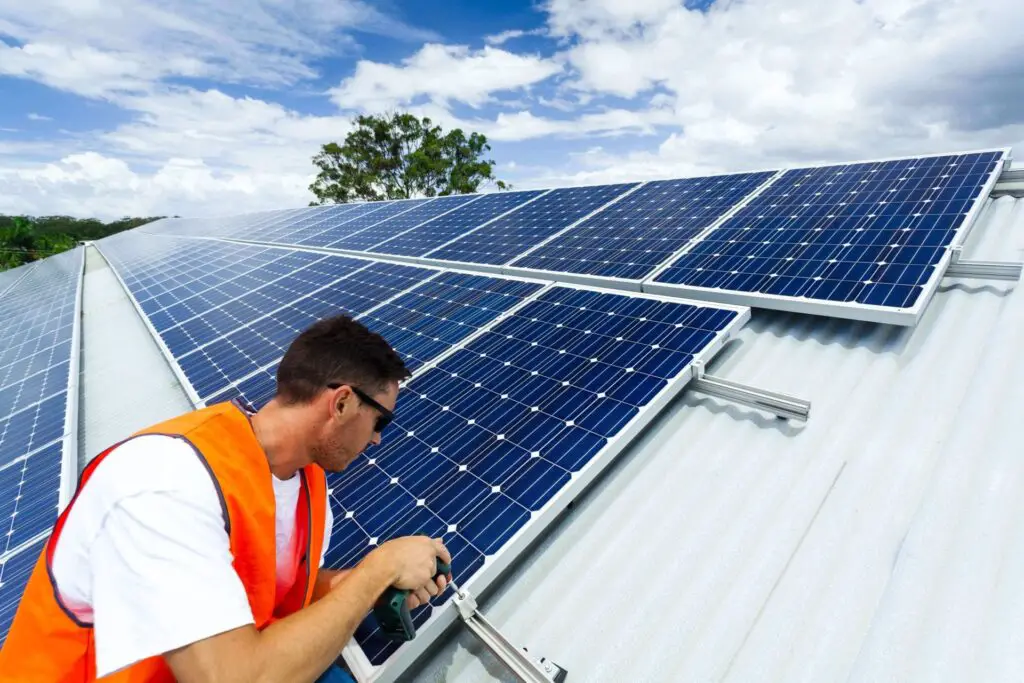
Conclusion
Moreover, we discussed the financial advantages of going solar on a manufactured home, such as reduced energy bills, potential incentives, and long-term return on investment. By tapping into renewable solar energy, homeowners can not only save money but also contribute to a cleaner environment by reducing their carbon footprint.
Real-world success stories and examples showcased the positive impact of solar panels power on manufactured homes, inspiring more homeowners to embrace sustainable energy solutions. As the world continues to shift towards a greener future, these success stories highlight that anyone can play a role in combatting climate change, regardless of their housing type. Remember that every step towards renewable energy contributes to a cleaner and more sustainable world for future generations.
Installing solar panels on a manufactured home is not only a smart financial decision but also a statement of commitment to a sustainable future. As technology continues to evolve, the solar industry is expected to become even more accessible and affordable, making solar power an increasingly attractive option for homeowners across the board. As you embark on your solar journey, it’s essential to consult with reputable solar installers and explore available incentives and financing options to make the process as seamless as possible.




